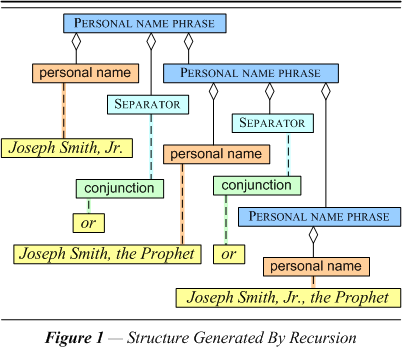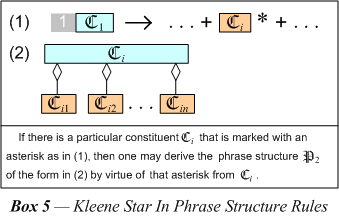1.1 PS-rule for a personal name phrase. Suppose the GT linguist wants to describe a personal name as a phrase. The first thing that occurs to us is that a personal name phrase may consist of two personal names separated by the conjunction or, a separator. There is, of course, the possibility that the name phrase consists of a many names. Fortunately it is possible to make the rule recursive and thereby allow as many additional sets of personal names as required, perhaps as follows:

Notice that each additional element must be embedded in the one just previous. This just does not seem right. Computer scientists have what they call a Kleene star to indicate one or more instances, so as not to embed them. If we use this device, we can keep the repeated elements together as a unit.

In effect the Kleene star device ignores or glosses over the semantics of the conjunction, e.g., “or” is a disjunction between two elements. The star generates the desired results, i. e., the syntax of an alias, in a direct way. (The interpretation of a Kleene star is part of the syntax language, not of the grammar of personal names.)

In the analysis just given we chose to make the separator into a conjunction. This may be expressed in a grammar by using a segment structure rule. The form and interpretation of this kind of rule was given above in section 2–B. It specifies the subclassification of the terminal constituent (separator) that we have attached to it in the diagrams.

To be more precise it is always possible to construct a more elaborate grammar so that additional terminal constituents might be specified and classified.
